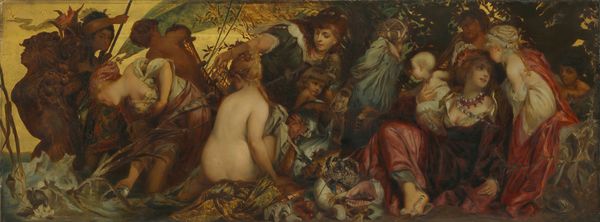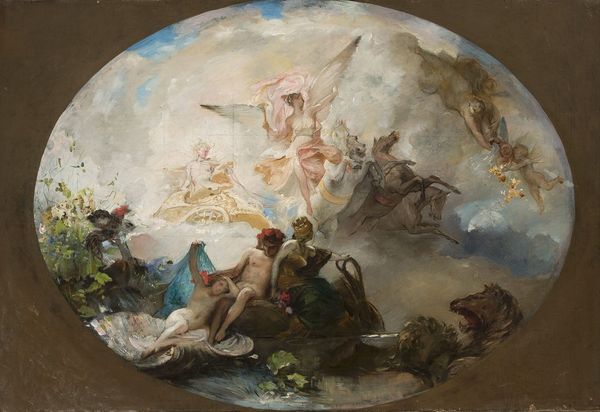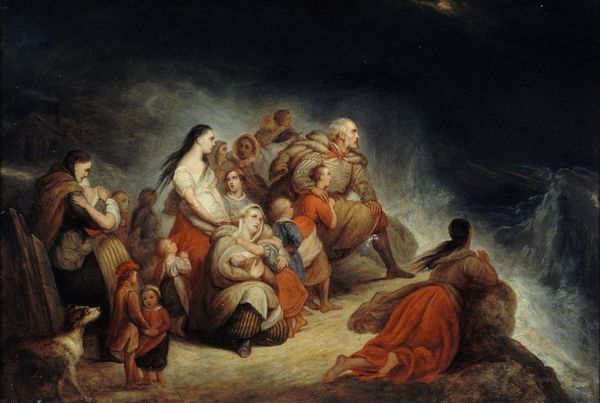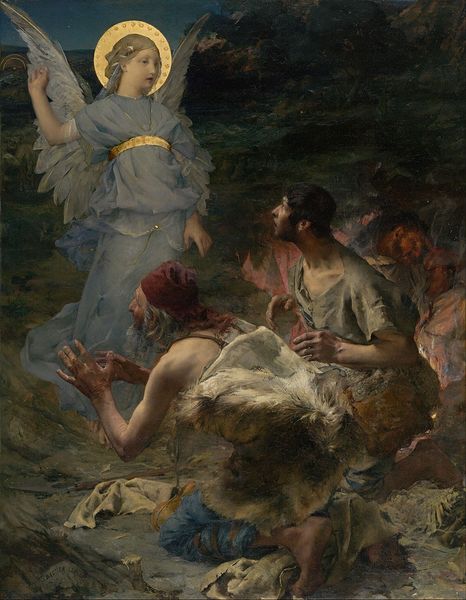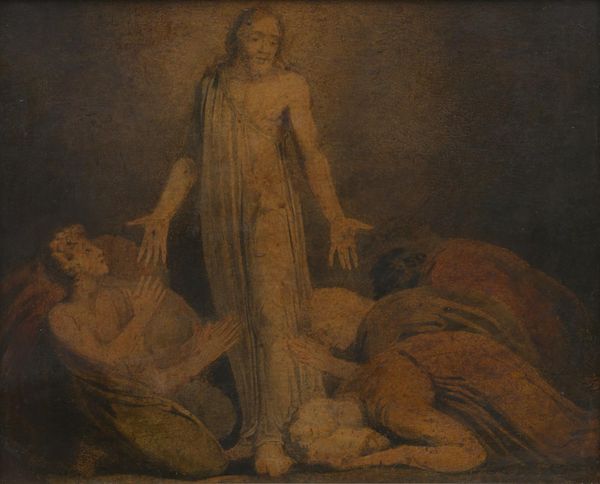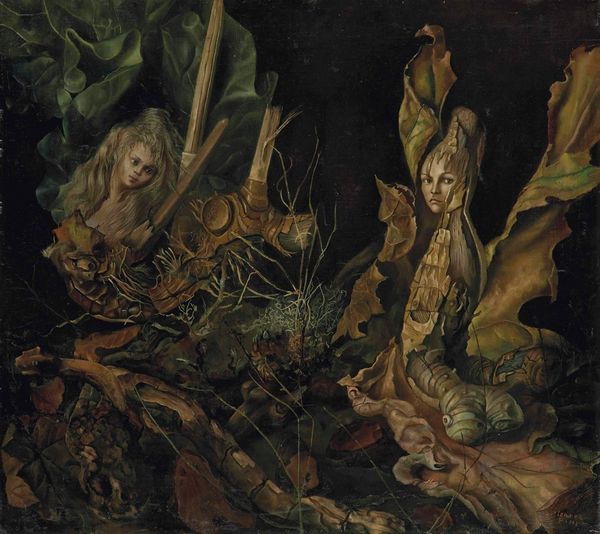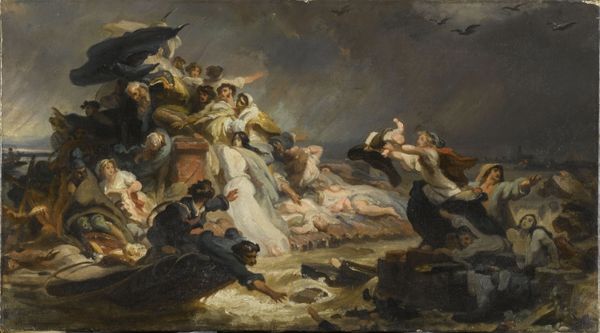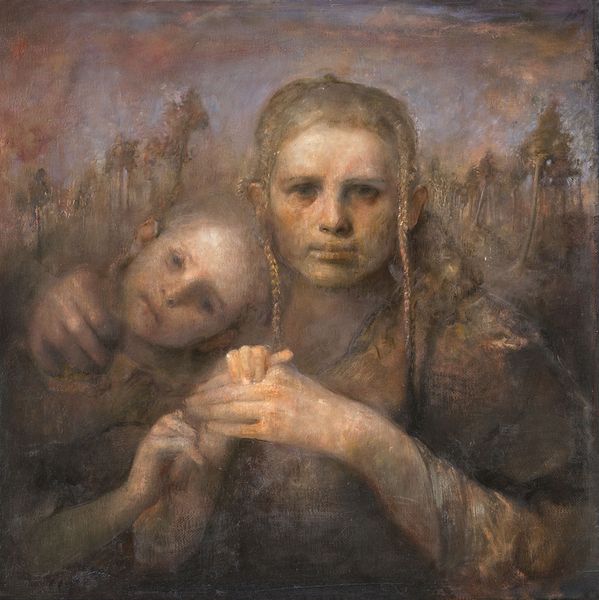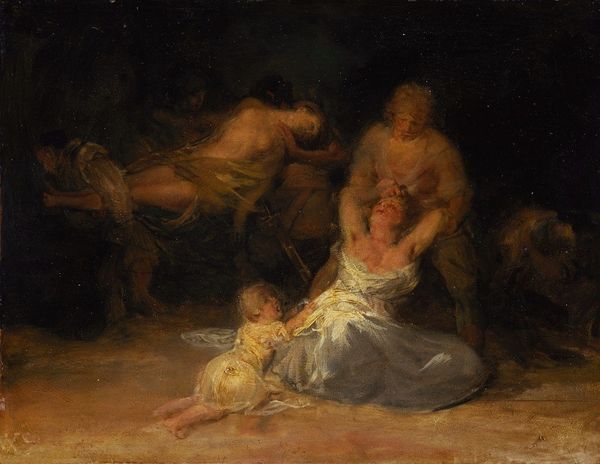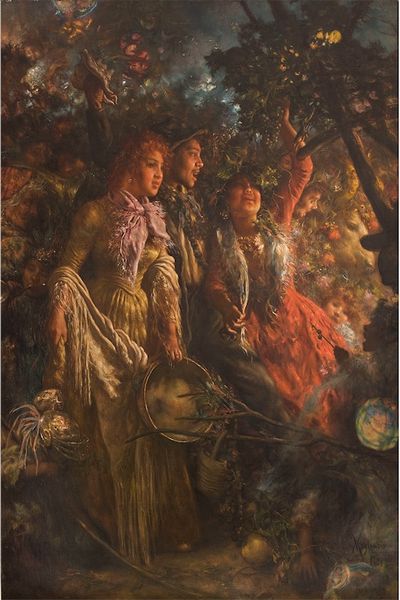
painting, oil-paint
#
narrative-art
#
painting
#
oil-paint
#
charcoal drawing
#
figuration
#
oil painting
#
group-portraits
#
romanticism
#
mythology
#
history-painting
#
academic-art
#
modernism
Copyright: Displayed with the permission of the Nerdrum Museum (http://nerdrummuseum.com)
Curator: Today we're exploring "The Messenger," an oil painting by Odd Nerdrum, an artist often associated with a return to classical figurative traditions. What’s your initial take? Editor: Foreboding. The subdued palette and the subjects' anxious expressions give off a strong sense of unease. Is the central figure being protected, or held captive? The line is so blurred. Curator: The composition, while seemingly chaotic, adheres to a strict pyramidal structure. The central figure’s pallor creates a focal point, drawing the eye upward. There's a textural interplay between the figures' draped clothing and their soft, fleshy forms. Editor: I’m struck by the painting's ambiguity, especially in today’s climate. Who are these people? Is it a depiction of forced migration, a rescue, or even an abduction narrative painted with deliberate historical vagueness, that subtly highlights historical injustices? I find myself questioning the artist's intended narrative, particularly his choice of the female figure’s central vulnerability. Curator: It certainly evokes romanticism in its emotional intensity. Note the swirling, indistinct background – almost Turner-esque – and the meticulous rendering of fabrics, calling back to the Old Masters. But that adherence to classical structure serves only to highlight the modern sensibility through the character’s costumes and affect. Editor: It’s true that there are classical nods. The central figure could be a modern-day Ophelia, suspended between worlds. But those medieval weapons carried by some figures contrast sharply with her seeming innocence. She could be a symbol for abused refugees or the women who are trafficked every day and objectified in both academic art traditions and present day realities. It really speaks to the continuous exploitation, as well as objectification of women in visual culture throughout the ages. Curator: The beauty of form becomes a potent delivery vehicle, and what could be read as another group of academics’ nudes, it transforms the group dynamics and contextualized interpretation. Thank you. Editor: Agreed, by situating this group within multiple contexts it really prompts a critical reassessment of historical portrayals of gender and marginality in art, challenging viewers to confront both the past and the present. Thanks for pointing those out.
Comments
No comments
Be the first to comment and join the conversation on the ultimate creative platform.
